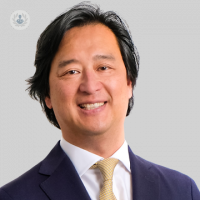What is a Hydrus microstent and what is its purpose?
Written by:What is a Hydrus microstent?
A Hydrus microstent is a small, flexible device that is inserted into the eye during cataract surgery in order to improve the outflow of fluid from the eye.
It is used in combination with cataract surgery, in order to help lower intraocular pressure (IOP) for patients with open-angle glaucoma.

When and how is it used?
The Hydrus microstent is typically used during cataract surgery. Cataract surgery is a surgical procedure performed to remove the clouded lens of the eye and replace it with an artificial lens.
During the procedure, the microstent is inserted into the eye through a small incision in the cornea. Once in place, it helps to improve the outflow of fluid from the eye and reduce IOP.
Why might a Hydrus microstent be necessary when performing cataract surgery?
The main reason the Hydrus microstent might be necessary during cataract surgery is to treat open-angle glaucoma. This is a condition in which the fluid pressure inside the eye is too high and can damage the optic nerve.
High IOP is a major risk factor for glaucoma, therefore reducing IOP can aid prevention of glaucoma or it may slow the progression of the disease.
What are the potential risks?
As with any surgical procedure, there are potential risks associated with the use of the Hydrus microstent. Risks may include infection, bleeding, and formation of scar tissue.
Additionally, there is a risk of damage to the cornea or to other parts of the eye during the insertion of the microstent.
Is the procedure safe?
The Hydrus microstent has been studied extensively and it has been proven to be safe. It has also been proven to be effective in lowering IOP in patients with open-angle glaucoma.
However, as with any medical procedure, it is essential to discuss the potential risks and benefits with your doctor. It is of utmost importance to carefully follow their instructions before, during, and after the procedure


